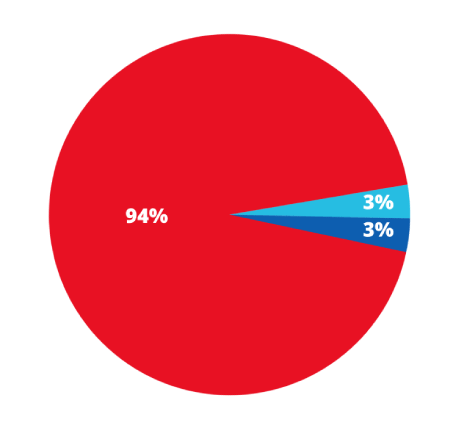Thanksgiving in the United States is a beloved national holiday filled with tradition, family gatherings, and a celebration of gratitude. In 2024, the Thanksgiving date is Thursday, Nov. 28th. Each year, millions of Americans come together on this day to enjoy a hearty feast with their families, watch football, and reflect on the blessings in their lives.
Unlike holidays with fixed calendar dates, like Christmas on Dec. 25 or New Year’s Day on Jan. 1, Thanksgiving has a floating date. For most of America’s history, the holiday has been celebrated near the end of November. Since 1939, the country has observed the Thanksgiving holiday on the fourth Thursday of November.
This means that the earliest date for Thanksgiving is Nov. 22, while the latest is Nov. 28.
This floating date often leads people to wonder why Thanksgiving in the U.S. is held on the fourth Thursday of November and how this particular scheduling tradition came to be. The history behind Thanksgiving’s date, like the holiday itself, is rooted in both colonial history and modern political decision-making.
Thanksgiving’s Early History
The tradition of a late-autumn community feast to give thanks for bountiful harvests predates the founding of the modern United States by centuries. The practice was central to many indigenous tribes in North America long before their first encounters with Europeans. The fabled “First Thanksgiving” of 1621, which brought together approximately 50 English colonists and 90 Wampanoag natives in what is now Plymouth, Massachusetts, established such a tradition among the burgeoning population of European settlers.
During 17th and 18th centuries, as the English settlements turned into full-fledged colonies, and then eventually into an independent United States of America, the thanksgiving feast became an important tradition for many communities. However, there was not yet any designated Thanksgiving Day, as most celebrations were tied to the local harvest time.
It wasn’t until George Washington In 1789, just months after being sworn in as the United States’ first president, that the first national proclamation of Thanksgiving was made. This proclamation designated Nov. 26 (a Thursday) of that year as a day of public thanksgiving and prayer. Washington’s declaration was aimed at giving thanks for the new U.S. Constitution and the peaceful establishment of the nation’s government. However, this would not become an annual tradition. For the next 75 years, it remained up to state and local governments to select the date for the thanksgiving feast.

Abraham Lincoln The Establishment of a National Thanksgiving Day
It wasn’t until 1863, in the midst of the U.S. Civil War, that Thanksgiving became an official national holiday with a regularly scheduled date. A proclamation from President Abraham Lincoln called for all Americans to give thanks on the last Thursday of November each year, part of an attempt to unite the country and acknowledge the sacrifices made by Union troops in the war.
Lincoln’s decision was largely influenced by the persistent efforts of Sarah Josepha Hale, a prominent writer and editor who had been campaigning for a national Thanksgiving holiday for decades. Her lobbying helped solidify the idea of a unified day of thanks across the country.
Franklin D. Roosevelt and the Date Debate
The last Thursday in November remained the date of Thanksgiving for decades following Lincoln’s proclamation. However, during the Great Depression in the late 1930s, a controversy arose over the holiday’s date. In 1939, retailers pressured President Franklin D. Roosevelt to move Thanksgiving up by one week to extend the holiday shopping season and stimulate the economy. That year, Thanksgiving was scheduled to occur on Nov. 30 – the fifth Thursday of November – and desperate retailers feared they would lose out on critical sales before Christmas.
Roosevelt agreed and moved Thanksgiving to Nov. 23, the fourth Thursday of November, sparking widespread debate. While some states followed Roosevelt’s lead and celebrated the holiday on the earlier date, others stuck with the traditional last Thursday, creating confusion and division. This led to two Thanksgiving celebrations in some parts of the country that year, with people humorously referring to the new date as “Franksgiving.”
A Permanent Date
Two years after the “Franksgiving” controversy, the U.S. Congress passed a joint resolution officially setting Thanksgiving on the fourth Thursday of November, ending the dispute once and for all. This compromise aimed to appease both traditionalists and those who favored an extended holiday shopping season. Since then, Thanksgiving has been celebrated consistently on this date, creating a fixed yet flexible tradition that allows for a slightly different celebration date each year.
In conclusion, Thanksgiving 2024 will be on November 28th, and the reason we celebrate it on the fourth Thursday of November is rooted in both historical decisions and modern economic considerations. What began as a colonial harvest celebration evolved into a national holiday, shaped by presidential proclamations and political compromises that continue to influence the way Americans observe this cherished holiday today.
Share Your Blessings This Year With Embrace Relief’s Year-End Giving
While the modern history of Thanksgiving is closely intertwined with commercial interests and holiday shopping, the heart of the holiday remains the sharing of blessings with those less fortunate.
This Thanksgiving, if you are looking for a gift that will make a real impact on the lives of people in need, you can do so with a gift to Embrace Relief’s Year-End Giving campaign!
This year, Embrace Relief is offering you the choice of three critical humanitarian programs to support:
- Clean Water, in which your donation will help build water wells in Africa;
- Cataracts, in which your donation will provide a free surgery to restore a person’s sight; and
- Raise the Children, in which your donation will provide basic necessities for orphaned children.
During this time of giving and charity, support Embrace Relief’s Year-End Giving campaign using the donation box below. No donation amount is too small, and you can be sure that the recipients of your generosity will be offering you thanks this holiday season.





















